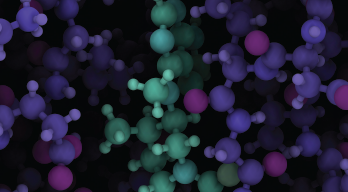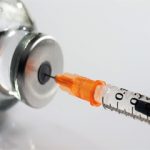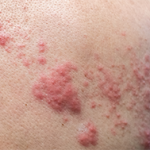
The Janus kinase 1 protein.
StudioMolekuul / shutterstock.com
SNOWMASS VILLAGE, COLO.—Janus kinase inhibitors—or Jakinibs—are a relatively new class of disease-modifying anti-rheumatic drugs (DMARDs) that perform well and have a safety profile comparable to biologics. This group of drugs was the subject of The New Frontier: Comparative Safety of JAK Inhibitors, a presentation given at the ACR Winter Symposium by Kevin L. Winthrop, MD, MPH, professor, School of Public Health, Division of Infectious Diseases, Oregon Health & Science University, Portland.*
Dr. Winthrop has been working to understand the safety of Jakinibs “since the early days” of their development, he said, and shared current information about Jakinibs, their safety profile and potential risks, and key considerations for their use.
Current Market
In the U.S. today, three JAK inhibitors are approved for use in rheumatology patients: tofacitinib, baricitinib and upadacitinib. Another Jakinib, peficitinib, is approved for rheumatoid arthritis (RA) treatment in Japan, and ruxolitinib is approved by the U.S. Food & Drug Administration (FDA) to treat myelofibrosis. Several other drugs are in various phases of development and testing, so it’s expected that more will enter the market soon.
All of these medications are pretty similar, although they have slightly different targets, Dr. Winthrop said. Specifically, tofacitinib targets JAK1 and JAK3, baricitinib targets JAK1 and JAK2, and upadacitinib targets JAK1. But all Jakinibs can have off-target effects and become less selective at higher doses.
Safety & Risks
The safety profile of the various Jakinibs is similar to that of biologic drugs, Dr. Winthrop said, but tofacitinib has been studied the most because it has been approved for use the longest. He shared results from numerous studies:
- A 2016 study of more than 5,600 patients, published in Annals of the Rheumatic Diseases, showed no increased risk of malignancy with tofacitinib;1
- Another study, published in 2014 in Arthritis & Rheumatology, showed the overall risk of infection (including serious infection) and mortality rates in rheumatoid arthritis (RA) patients treated with tofacitinib were similar to those observed in RA patients treated with biologic agents;2 and
- In a 2015 study, published in Annals of the Rheumatic Diseases, Dr. Winthrop and colleagues noted an increased risk of opportunistic infections among patients with RA using tofacitinib, but infection occurrence overall was rare.3
The more pronounced differences between Jakinibs and biologics are the increased risk of viral infection (specifically herpes zoster) and perhaps some vascular events.
Dr. Winthrop and colleagues studied the correlation between tofacitinib treatment and herpes zoster, and published their results in a 2014 issue of Arthritis & Rheumatology.4 They concluded that RA patients being treated with tofacitinib had an increased incidence of herpes zoster infection compared with patients taking placebo, especially patients in Asia; however, complicated infections were rare in patients receiving treatment.
An increased risk of infection is to be expected, Dr. Winthrop said, because of the mechanism of action of Jakinibs. They are known to down-regulate interferon-gamma and diminish cell-mediated immunity and innate immune function, such as the number and activity of natural killer (NK) cells.


